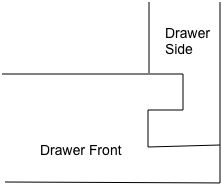Status: Entered
Assigned To:: Unassigned
=====================================
Using the Porter Cable Dovetail Jig, need a solution to avoid the destructive plywood splintering I am getting. I am using good grade plywood (specifically 1/2"). . . do you think applying titebond glue to ends will avoid the tearing and splintering??
Bob
Assigned To:: Unassigned
=====================================
Using the Porter Cable Dovetail Jig, need a solution to avoid the destructive plywood splintering I am getting. I am using good grade plywood (specifically 1/2"). . . do you think applying titebond glue to ends will avoid the tearing and splintering??
Bob

